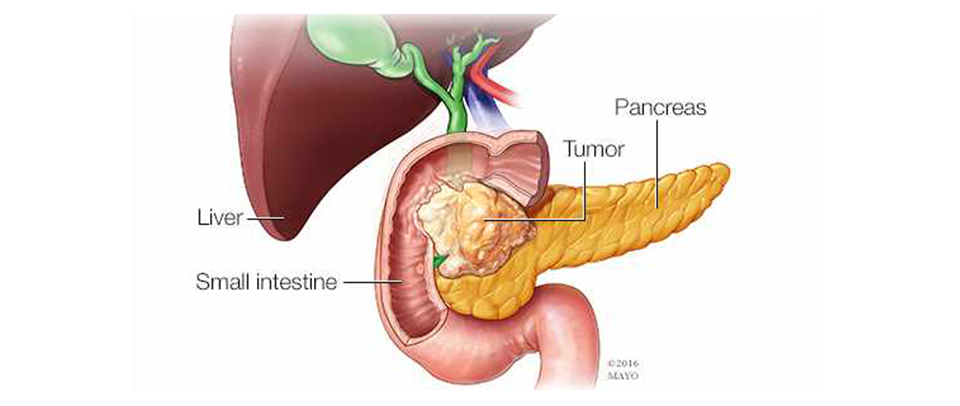Introduction

Pancreatic cancer occurs when abnormal cells grow in the pancreas. These cells divide out of control and form a tumor. The pancreas is located deep in the abdomen behind the lower part of stomach. It helps in digestion and produces hormones that control blood sugar levels. This type of cancer spreads rapidly to other organs and can hardly be detected in the early stages. One sign of this cancer is diabetes with weight loss.
Symptoms of Pancreatic Cancer include:
- Depression
- Fatigue
- Jaundice
- Loss of appetite
- Blood clots
- Bloating
- Back pain
Types of Pancreatic Cancer
The types of pancreatic cancer are classified based on whether they began in the exocrine or endocrine gland. Other rare types of cancers such as lymphoma and sarcoma also arise in the pancreas. About 93 percent of pancreatic cancers are exocrine tumors.
Exocrine Tumors – It is commonly occurring and most frequent type of adenocarcinoma. It usually starts in the ducts of the pancreas. If the cancer begins in the ‘acini’ it is called acinar adenocarcinoma. A common diagnosis reveals ‘intraductal papillary mucinous neoplasm’ (IPMN), a tumor that grows inside the ducts and creates a thick fluid called mucin. Though it is not cancerous in the beginning, it can become cancerous if left untreated.
Endocrine Tumor – These are known as pancreatic neuroendocrine tumors (PNETs). It is more common than the endocrine tumor. This tumor can either be functioning or non-functioning. While functioning tumor produces hormones the non-functioning tumor does not produce hormones.

